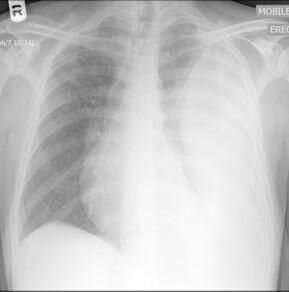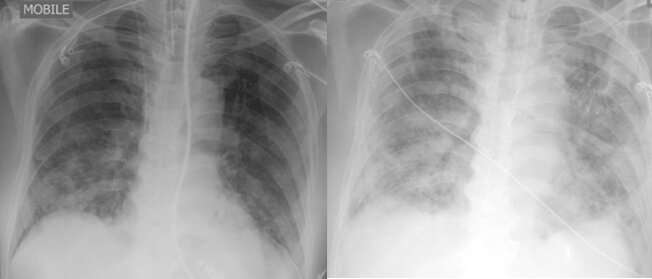Untangling COVID-19 and tuberculosis

As the UK marks one year since the country went into lockdown, we’ve also been looking further afield to countries disproportionately burdened by infectious diseases, including COVID-19. To mark this year’s World TB Day, we spoke to Robert Wilkinson, head of the Crick’s Tuberculosis Laboratory, about his team’s work in Africa, understanding the links between SARS-CoV-2 and TB infections.
Tuberculosis (TB) remains the leading bacterial cause of death worldwide. Robert’s team, based at the Crick and the University of Cape Town, South Africa, have been investigating the interaction between TB and the immune response, to find better ways to treat the disease, particularly in people who are also HIV positive.
When SARS-CoV-2 first emerged, the team started to investigate the effects of coinfection with these different conditions and what that means for patients and health services in Africa.
What prompted you to investigate the connection between COVID-19 and TB?
Robert: Africa hasn’t been spared in this pandemic. Fragile health systems, lack of access to testing and under-reporting of cases means that the total number of COVID-19 cases and deaths is likely to be much higher than global statistics would indicate.
Like TB, COVID-19 is also a disease that disproportionately affects ethnic minorities and people from poorer backgrounds, and more research is urgently needed to bring about better health equality.
We already knew that both TB and HIV were risk factors for dying with COVID-19. In fact, active TB infection is associated with double the risk of death from COVID-19. And as the pandemic grew, we wanted to understand why this is the case and whether there are any clinical signs that could be used to direct treatment.
As our original TB research had slowed due to the lockdown at the beginning of last year, we adapted some of our techniques and procedures for monitoring immune responses, to refocus on this pandemic virus.
What have you been studying?
We’ve been investigating various aspects of coinfections with COVID-19 and TB, and also HIV-1.
Over a number of years, we’ve been developing a test to look at immune cell activation and its relationship to subsequent risk of TB. This involves incubating blood samples with TB and looking at biomarkers that could help us predict who’s most likely to develop active TB.
We’ve now repurposed this test to look at what’s happening in the blood of people with TB and COVID-19, and sometimes also HIV-1. We’re looking at the relationship between the immune response and the clinical symptoms shown by individual patients.

What are you starting to see?
Unsurprisingly, we’ve found that lung damage as a result of TB infection is also associated with more severe COVID-19 cases. But we’ve also starting to show that the two conditions are both immunologically and clinically linked.
Early results from our studies indicate that people with both TB and COVID-19 have a dampened immune response, which could hinder their body’s ability to fight both infections. It’s also possible that the inflammatory immune response, initiated by the body to fight COVID-19, creates an environment that is favorable to TB infection.
We’ve seen patients being treated for COVID-19 who don’t seem to be getting better, and after a couple of weeks, show signs of TB complications. This could also be due to treatment with steroids, which have greatly improved outcomes for people with COVID-19, but can also increase the risk of latent TB becoming activated.
What could this mean?
It likely means that in countries with a higher incidence of TB, you can’t consider COVID-19 to be an isolated disease. There are a number of competing factors when it comes to co-infections, different treatments and the immune response.
What challenges remain?
There’s another big problem to consider and it’s operational, not biological. Because the COVID-19 health response was understandably huge, the pandemic has greatly disrupted TB care in Africa. The usual approach to treating TB infection is to receive daily medication over a course of six months. And the gold standard of care is for this treatment to be directly observed by a healthcare professional.
But over the last year, people haven’t been able to access healthcare facilities in the way they could before. In fact, people with coughs, who are being told to self-isolate for two weeks, may actually be missed TB cases. And as a result, the number of cases and deaths from TB might be greatly underestimated this year.
What are the next steps for your research?
Source: Read Full Article


